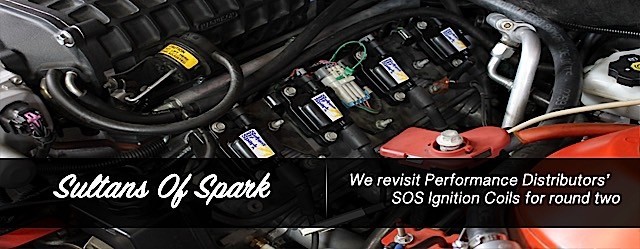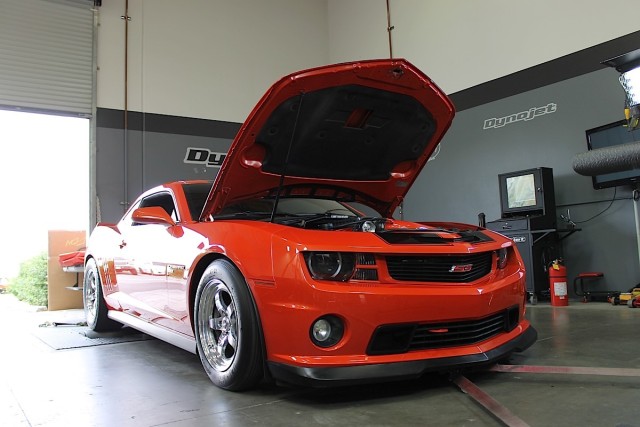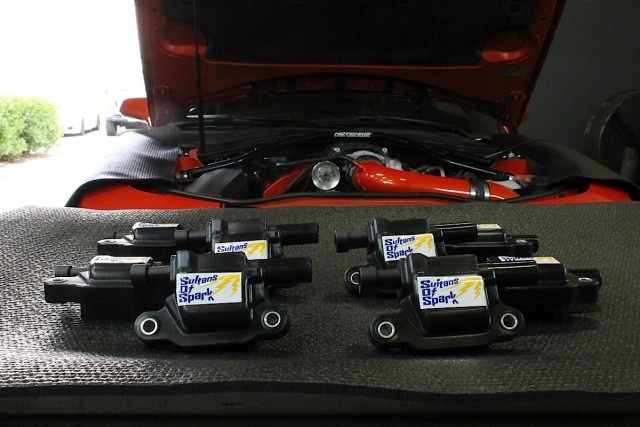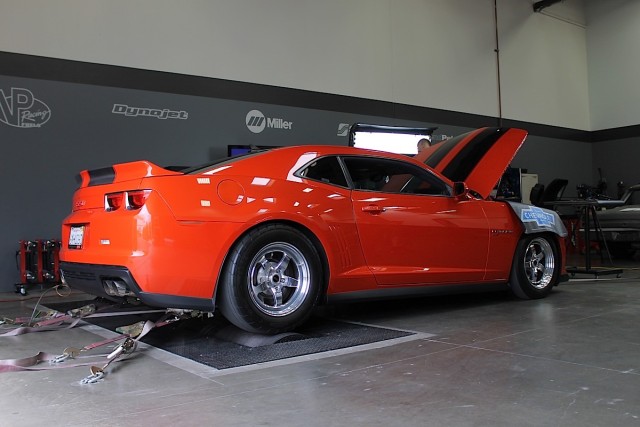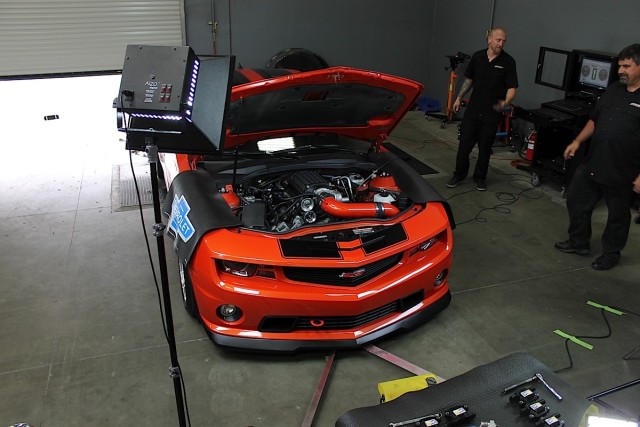Just a little over a year ago, we tested Performance Distributors‘ Sultans of Spark (SOS) ignition coils on our project Cadillac CTS-V coupe. The results were extremely bonkers. So bonkers in fact, that our readers actually suggested that we somehow rigged the results through a number of manifested possibilities. We admit, we love a good challenge. We want our readers to question the results, and how we came to our conclusions. That’s the beauty of modifying a car, it is all about trial and error.
The Story That Started It All
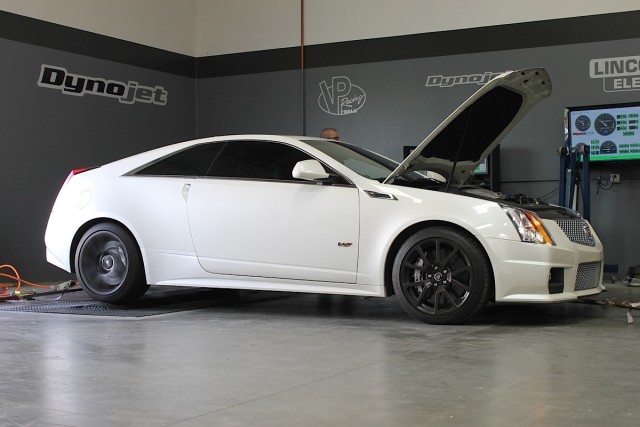 If you haven’t had a chance to read our previous article, we’ll fill you in on some of the finer details. Performance Distributors was kind enough to send us its new Sultans of Spark series ignition coils to install on our project CTS-V coupe. Before installing the new coils, we had to baseline test our CTS-V on our in-house Dynojet. Our project CTS-V did have a few modifications performed at the time of this test. Those included a Lingenfelter LSA Supercharger Upgrade and a Lingenfelter intercooler package with dual two-speed SPAL fans. While definitely far from stock, we consider it on the mild side as far as builds go.
If you haven’t had a chance to read our previous article, we’ll fill you in on some of the finer details. Performance Distributors was kind enough to send us its new Sultans of Spark series ignition coils to install on our project CTS-V coupe. Before installing the new coils, we had to baseline test our CTS-V on our in-house Dynojet. Our project CTS-V did have a few modifications performed at the time of this test. Those included a Lingenfelter LSA Supercharger Upgrade and a Lingenfelter intercooler package with dual two-speed SPAL fans. While definitely far from stock, we consider it on the mild side as far as builds go.
After three initial pulls on the dyno, our CTS-V laid down a best of 512.6 horsepower and 521.7 lb-ft of torque at the rear tires. We replaced the factory GM ignition coils with the new SOS ignition coils. The installation was relatively the same for our CTS-V as it was the supercharged Camaro SS in the video above, but we’ll get to that later in the article. After letting the car sit for an hour to cool down and confirming everything was installed correctly we performed post-installation testing.
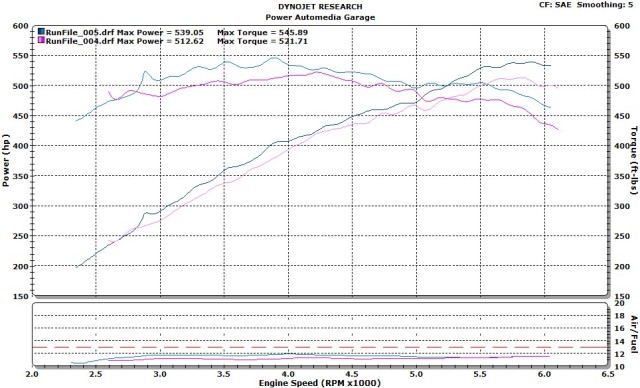
Our initial gain of 26.4 horsepower and 24.1 lb-ft of torque shocked us. Our CTS-V had put down a staggering 539.0 horsepower and 545.8 lb-ft of torque after just a simple ignition coil swap.
Why Did We Decide To Revisit This?
The information we report to our readers is important to us, and it’s even more important how we get it to you as well. When we saw the feedback from our readers from the first story, we were amazed. That’s why we reached out to Performance Distributors again. They hooked us up with the same coils from our last test for a unique second test format.
“What you can expect from these coils, is a faster, more reliable, and hotter ignition spark.” – Steve Davis, Performance Distributors
This fifth-generation Camaro SS we borrowed for the day is actually a fan's car. The modification list is extremely lengthy, with some of the highlighted upgrades being the Magnuson TVS supercharger, long-tube headers that lead to an off-road X pipe and full exhaust, and a custom cold air intake system.
We know some of you are probably wondering why we chose to revisit these coils using a different car. Well, the answer is simple. With our lightly modified project CTS-V coupe we were able to see a significant increase in horsepower. We’re not sure if these modifications actually contributed to the bonkers amount of power we gained the first time around, which is why we’re testing these coils on a completely different, and highly-modified car. There are varying theories regarding making additional modifications to an already modified or custom tuned car. Some of those support that changing the coils should make a difference in power. Others would argue that with the car tuned properly, changing the coils will have little to no difference. This test will answer those questions for this car at least.
Revisiting Performance Distributors’ Sultans of Spark Ignition Coils
We’re using the same SOS ignition coils Performance Distributors supplied us with last time. These coils are a popular upgrade, not only because of the horsepower we’ve shown them to make, but because of the ease of installation, and the quality of their construction. Since these coils are designed to improve on power and efficiency of the vehicle (thanks to the additional 7,000 volts per coil compared to stock), the SOS coils are perfect for naturally-aspirated applications as well. Performance Distributors claims on some naturally-aspirated applications, that owners can open spark plug gaps up to as much as .065 inches.
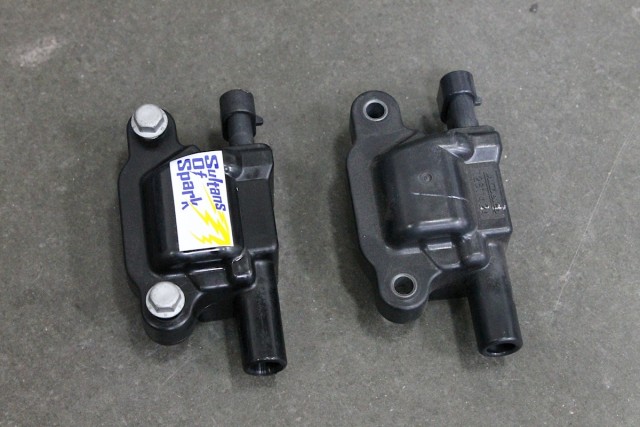 Steve Davis with Performance Distributors says, “What you can expect from these coils, is a faster, more reliable, and hotter ignition spark, which of course helps to prevent the engine from misfiring. The coils are as easy as ever to swap. With the only necessary tool needed being a 10-mm ratchet, socket, and extension, removing all eight coils from the LS engine should only take you appropriately 10 to 15 minutes, if you don’t run into any clearance issues.” The coils are held by two bolts with 10-mm heads, and are connected to two connectors. One is connected to the ignition harness wiring (top plug), and the other is connected to the spark plug wire (bottom).
Steve Davis with Performance Distributors says, “What you can expect from these coils, is a faster, more reliable, and hotter ignition spark, which of course helps to prevent the engine from misfiring. The coils are as easy as ever to swap. With the only necessary tool needed being a 10-mm ratchet, socket, and extension, removing all eight coils from the LS engine should only take you appropriately 10 to 15 minutes, if you don’t run into any clearance issues.” The coils are held by two bolts with 10-mm heads, and are connected to two connectors. One is connected to the ignition harness wiring (top plug), and the other is connected to the spark plug wire (bottom).
If you remember from our first article, we mentioned that Performance Distributors uses brass terminals for the coils. This allows the coils to resist as much corrosion as possible. They also thermal epoxy in the construction of the coils. This is done to provide an improved heat transfer and resistance to unwanted engine vibrations during operation.
As we've said before, the installation really couldn't be any easier. With two people unbolting the factory coils on each side of the engine, it only took our staff around 10 minutes to remove and replace the OEM parts with the new SOS coils. Another benefit worth mentioning, is that these coils fit in the same location as the factory coils.
We asked Davis why go through the trouble of thermal epoxying the coils? He explained, “The heat needs to be dissipated better because naturally, by increasing the intensity of the spark, the unit is going to run at hotter temperatures. Another important aspect is the fact that they are fully compatible with flash devices and vehicle programmers, as well as provide benefits for vehicles running a stock tune.”
To add some insight to David’s statement, in the previous article, we swapped the coil packs directly and did not use a flash device to tune them for any additional horsepower gains. On our project CTS-V, we found the gains in horsepower and torque to be sufficient enough to not require any additional tuning. Knowing this information, we anticipated similar results again, as we are not using a flash device.
The Dyno Test
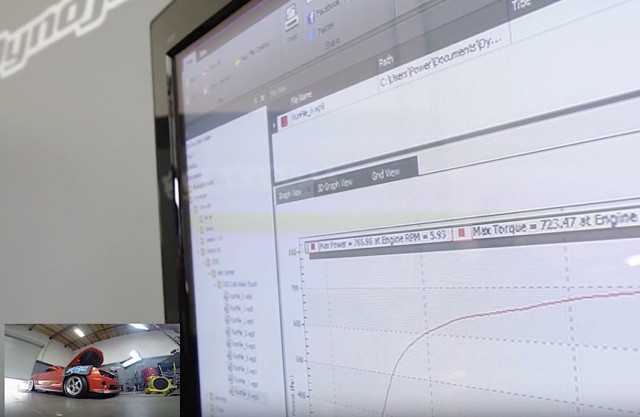 Before installing the new SOS ignition coils from Performance Distributors, we performed a baseline dyno pull on this heavily modified fifth generation Magnuson TVS 2300 supercharged Camaro SS. After the initial pull, we were able to put down an extremely impressive 765.9 horsepower and 723.4 lb-ft of torque. With this much power on a highly modified car, we weren’t sure what to expect from swapping out the factory coils.
Before installing the new SOS ignition coils from Performance Distributors, we performed a baseline dyno pull on this heavily modified fifth generation Magnuson TVS 2300 supercharged Camaro SS. After the initial pull, we were able to put down an extremely impressive 765.9 horsepower and 723.4 lb-ft of torque. With this much power on a highly modified car, we weren’t sure what to expect from swapping out the factory coils.
During our one take video, we setup one of our Go Pro cameras for time-lapse and placed a clock in front of it. Since our test Camaro is upgraded with forced induction and is sensitive to intercooler heat soak, we let the car cool for a minimum of a minimum of 60 minutes before we attempted additional testing.
Conclusion
After everything was said and done, Performance Distributors’ Sultans of Spark ignition coils did not disappoint us. After letting the Camaro cool completely, we immediately started the car and performed the final dyno pull. To our surprise, we saw an increase in power. Throughout the entire power curve, we saw gains of 5 to 12 horsepower from only swapping the ignition coils.
While we didn’t see a significant increase in peak horsepower and torque, we did see more power in the areas the engine spends most of its time. Considering that these ignition coils are extremely easy to install, relatively inexpensive, and that we have proven they actually make power the way the manufacturer claims not once, but twice, we can proudly say that we’d recommend these coils for any LS application, whether your car is naturally-aspirated or has forced induction.



